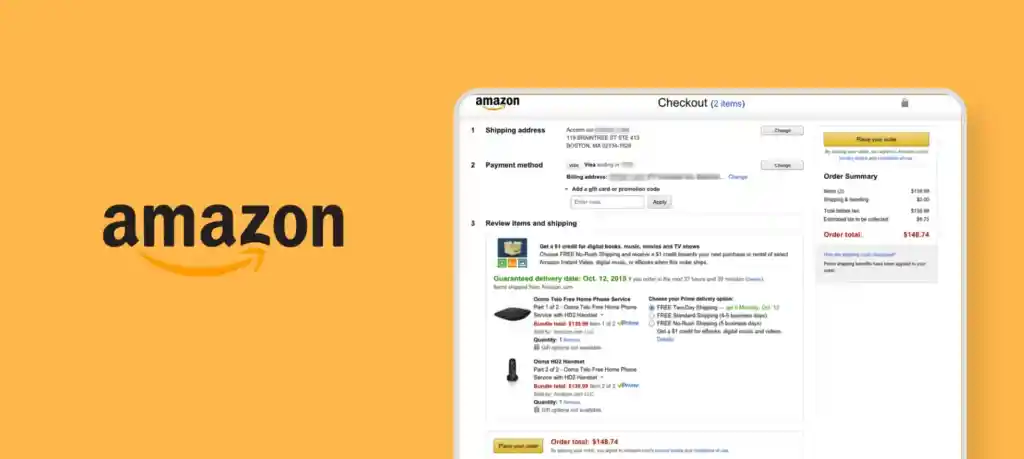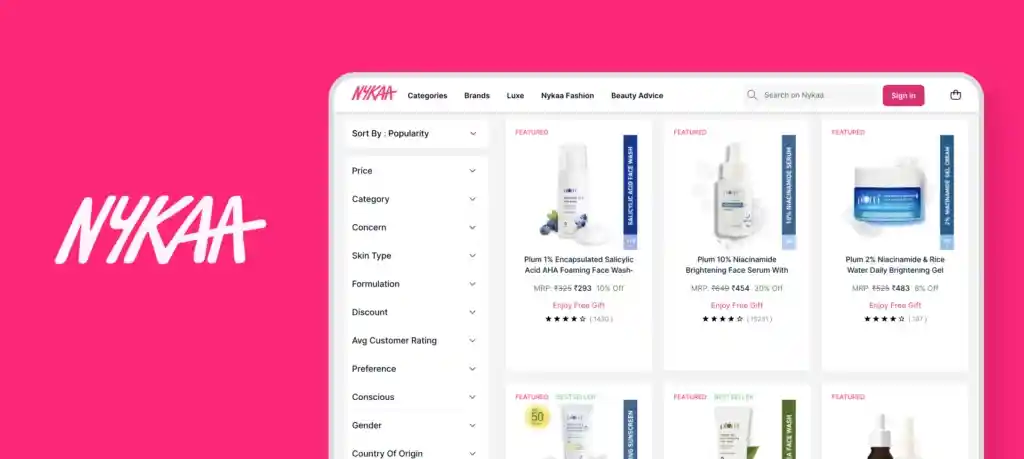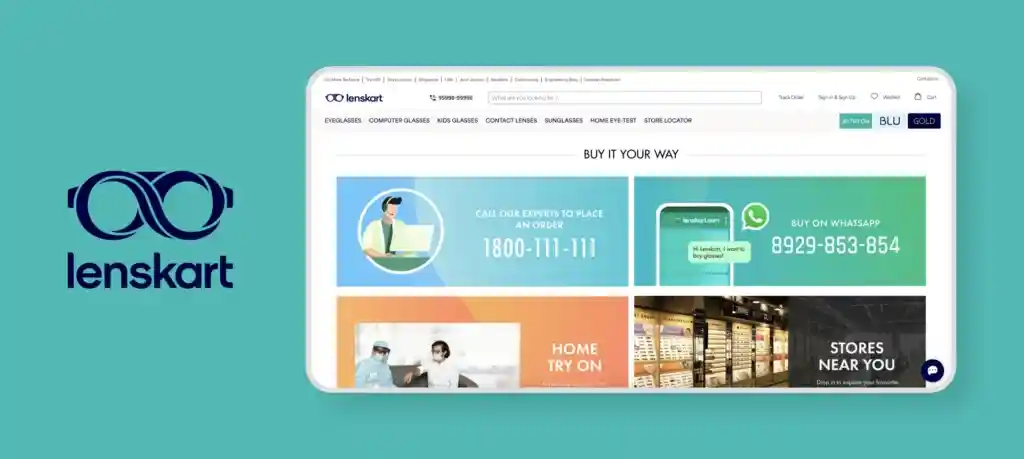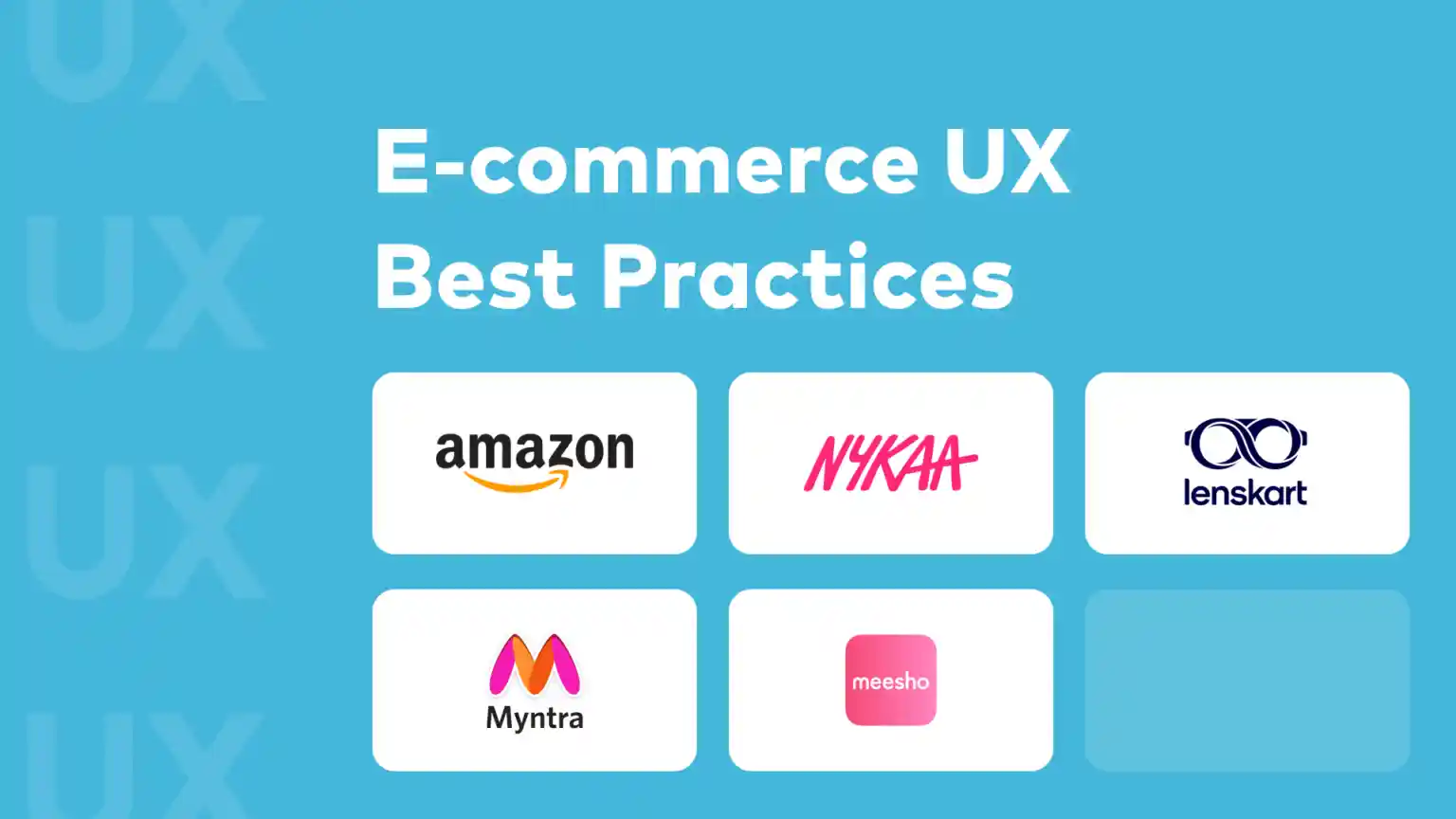The online world keeps changing. Every day, new trends and technologies shape how people use eCommerce websites. Hence, you must offer a great eCommerce UX to succeed in this fast-paced environment. In 2023, having a smooth and shopper-friendly website can make or break your success. In this blog, we’ll explore eCommerce UX and share 15 top practices to boost your online store’s performance.
What is E-commerce UX?
Ecommerce UX, short for ecommerce User Experience, is like the feeling you get when you walk into a physical store. It’s all about how people feel and think when they visit an online shop.
Furthermore, eCommerce UX is about creating a good experience for visitors to your online store. It starts the moment someone lands on your website. They should quickly find what they want, like shoes in a store. Moreover, Your website should be easy to navigate, with clear categories and a simple checkout process. In fact, think of it as making a virtual store where everything is well-organized, and customers can easily browse your products. Moreover, It’s about ensuring your online store is user-friendly, easy to understand, and enjoyable. Therefore, when your eCommerce UX is great, more people will buy things and feel happy with their online shopping.
Why Is UX Important for E-commerce?
A good eCommerce UX is like having a welcoming, organized, and easy-to-use store. Certainly, It makes customers enjoy shopping, come back for more, and find you easily in the crowded online world.
Boosts Conversions: Secondly, A good eCommerce UX can make more visitors buy things on your website.
Enhances Customer Loyalty: When shopping is easy and enjoyable, customers want to come back. Therefore, a good eCommerce UX should be focused on.
Reduces Cart Abandonment: A confusing or frustrating experience makes people leave without buying. Therefore, Simplifying the process can stop this.
Improves SEO: Lastly, Search engines like websites that are easy to use. A better eCommerce UX can help you show up higher in search results.
E-commerce UX Best Practices
When we talk about the online shopping experience, ensuring your eCommerce website provides a user-friendly, enjoyable eCommerce user experience is crucial. It’s not just about presenting great products or competitive prices; it’s also about crafting a user-friendly journey that keeps customers coming back for more.
From crafting engaging landing pages to simplifying navigation, empowering product search, and enhancing product presentation, we’ll cover every facet of creating a stellar user experience. Here are some eCommerce UX best practices to make the user experience of your online store stand out and bring in more customers:
Easy and Clear Navigation
Navigation is one of the main issues an eCommerce UX design may have. The navigation process must be simple. A reliable data architecture can be helpful in this situation. You can make sure that sites with a lot of products in one category utilize left-column navigation when designing the navigation for eCommerce websites so that customers can sort products by various criteria.
Search Functionality
It’s crucial to have a search option when designing the user experience for an eCommerce website with plenty of products. However, sticky search bars can ensure that search is everywhere on every page rather than putting a search bar on the homepage to improve the search function. Having said that, you can remove search from checkout pages.
High-Resolution Product Images
Provide excellent pictures and videos of each product. This helps to increase the visibility of the products and enhances the website’s appearance. High-resolution pictures can improve the aesthetic appeal of the products and the website. However, the website’s overall performance, including how quickly pages load, shouldn’t be affected by these images and videos.
Responsive Design
Mobile devices account for more than 55% of website traffic. As a result, eCommerce websites must be made to be mobile responsive. This means that UI/UX designers must be knowledgeable about mobile eCommerce UX design concepts and the web design constraints imposed by smaller screen sizes. Whether you need to hire an eCommerce designer to create an eCommerce app design, the goal is to give your users a good experience.
Bold Headlines to Grab the Attention
Customers have certain products in mind when they visit e-commerce websites. Deals and promotions become unnoticeable when they are included in homepages. Use bold wording to emphasize these elements. Also, make them short and catchy to tell customers about your products and promotions. The aim is to ensure these headlines are easy to spot in your eCommerce UX so customers know what’s important.
Give Preference to a Bigger Font Size
Clarity is essential for a good ecommerce User experience. Larger font sizes improve readability and accessibility, enabling buyers to easily scan and understand product details, prices, and calls to action. Furthermore, it supports a range of devices and user demographics. To retain a clear and beautiful design while putting readability first, the appropriate balance between font size, layout, and visual hierarchy is crucial.
Get Rid of Dark Patterns
Dark patterns softly nudge users to take a particular action. However, transparency, integrity, and user-centric e-commerce design must come first. Steer clear of pushy upselling, hidden fees, and misleading methods. Build trust and long-lasting consumer relationships by creating a seamless, ethical buying experience. This strategy helps your brand’s growth and reputation while improving user satisfaction. Hence, create a user-friendly eCommerce user Experience. You can do so by hiring an e-commerce website design company or an eCommerce web designer.
Shopping Cart Visibility
The “Add to Cart” buttons must be clearly visible. Make sure they are clickable, large, and high contrast. Also, your call-to-action text should be clear and action-focused. Additionally, as customers put things in their shopping carts, they must see the outcome. You can use cart-summary overlays, which briefly slide in from the side of the screen. This way, customers can proceed to the register or carry on browsing.
Loading Speed
Slow-loading pages can be frustrating for customers and cause them to leave. So, speed up your eCommerce website design by optimizing images, using less code, and using powerful hosting. eCommerce website designers or an e-commerce UX agency are the ones who can help you optimize this.
Clear CTAs (Call to Action)
Use clear and persuasive language for your call-to-action buttons. Make sure CTAs stand out with bold colors. This makes your eCommerce design more convenient. Moreover, your CTAs should emphasize the value proposition and convey a sense of urgency to entice customers to click and interact with your e-commerce site.
Personalization
77% of customers have picked, endorsed, or paid more for a company that offers a personalized service or experience. Therefore, you should modify the e-commerce user experience based on demographics, browsing history, and personal preferences. By doing this, eCommerce platforms can improve user experience, increase conversion rates, and encourage repeat business. This makes purchasing easier and user-centric.
Make Your Websites Accessible
Any e-commerce web design project has to consider accessibility. However, when it comes to eCommerce websites, this component is frequently disregarded. Following accessibility guidelines is a crucial practice if you want to attract a larger audience and make your websites useful for everyone.
Streamline Checkout Process
Make the checkout process seamless and straightforward. Don’t ask customers to fill out lengthy, complicated forms; only request the necessary data. Additionally, it’s always beneficial for consumers to have the choice to check out as a guest without being required to register for an account or sign up for marketing emails.
Multiple Payment Options
Make sure that customers can choose how to pay for the goods or services. Offer a variety of payment methods, including PayPal, Google Pay, Apple Pay, bank accounts, and credit or debit cards. To further streamline the checkout process, you can allow them to choose one and save it as their favorite payment method, which they can use going forward.
Maintain Consistency
Lastly, Keep a consistent look and message across your website. This is also true for eCommerce platforms where websites may have several pages. Users can quickly transition from one product to another. The overall user experience can be enhanced by providing a consistent and familiar environment. A good eCommerce UI builds trust and makes your brand familiar to users.
Definitely, By following these best practices, you can transform how customers interact with your online store. Indeed, Prioritizing the user experience creates a satisfying environment that keeps visitors returning and turning them into loyal customers.
How to spot and fix UX problems in E-commerce
While following best practices for your eCommerce store is great, every eCommerce website is unique and faces its own challenges. User research is crucial for finding UX problems. Figure out where visitors leave your site. Is it on the product page, during checkout, or when they see shipping costs? Moreover, using scroll and click heatmaps, understand how deep users scroll, where they click, and their overall experience with the website. Recognize sudden color changes in scroll heatmaps, which might indicate a false bottom.
As you move forward to fix UX problems, remember that not all UX problems are the same. Prioritization ensures you tackle high-impact issues first. Evaluate how each problem affects user satisfaction, conversions, and revenue. Consider how easily a problem can be fixed while balancing its impact with available resources. Remember, staying informed and putting users at the center of your efforts will help you improve your eCommerce user experience effectively.
Best E-commerce UX Examples
Get Personalized Product Suggestions on Myntra

Myntra makes shopping easier with personalized suggestions. They look at what you’ve bought before, your ratings, and reviews to suggest new clothes and accessories you might like.
Amazon’s Smooth Checkout Process

Secondly, Amazon keeps things simple when you’re ready to buy. It only takes a few clicks, and you can pick how you want to pay. Amazon is a great example of a good user experience design.
See Products Up Close on Nykaa

Nykaa shows you products with super clear pictures and helpful descriptions. This way, you can be sure about what you’re buying.
Lenskart’s Awesome Customer Service

Lenskart is all about great customer service. In addition to a good user experience, they have good customer service, too. You can reach out for help in many ways, like calling, emailing, or chatting live.
Shop in Your Language on Meesho

Lastly, Meesho lets you shop in many Indian languages, like Hindi, Tamil, Telugu, Kannada, Malayalam, and Bengali. It’s all about improving your shopping experience through an impactful user experience design.
Conclusion
A great eCommerce user experience (UX) boosts sales and keeps customers returning. Moreover, It ensures your website is easy to use and enjoyable. When people find shopping on your website smooth and friendly, they’re more likely to make purchases. Therefore, eCommerce UX is like having a welcoming, organized online store. Customers can easily find what they want.
If you’re ready to improve your online retail business and leave a lasting impression on your customers, consider partnering with Code Theorem. We offer eCommerce design and development services to create a seamless and engaging online shopping experience for your customers. Our team of experienced eCommerce designers ensures they deliver the best results every time!
Related Blogs
- All
- Blogs
- Development
- UI/UX Design




